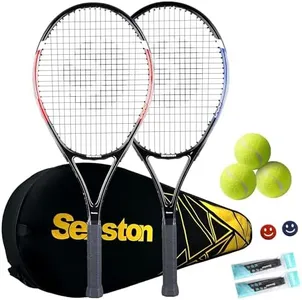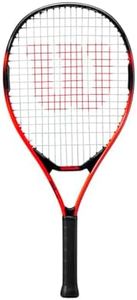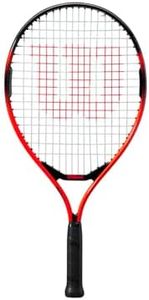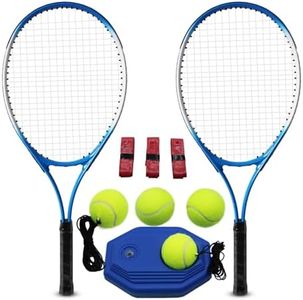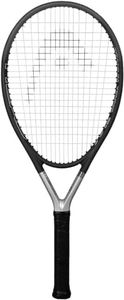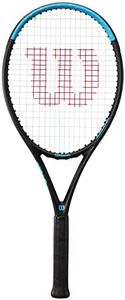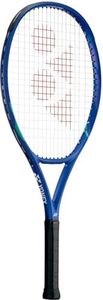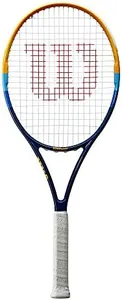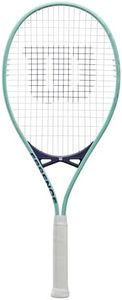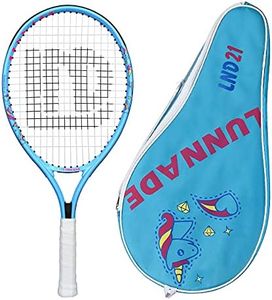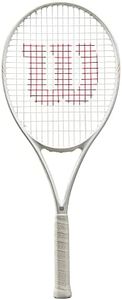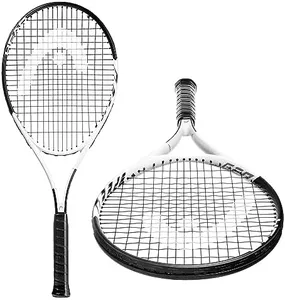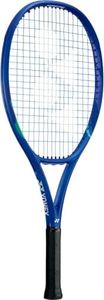We Use CookiesWe use cookies to enhance the security, performance,
functionality and for analytical and promotional activities. By continuing to browse this site you
are agreeing to our privacy policy
10 Best Beginner Tennis Racquets
From leading brands and best sellers available on the web.Buying Guide for the Best Beginner Tennis Racquets
Choosing a beginner tennis racquet is an exciting step towards enjoying and improving at the sport. The right racquet should help you learn proper technique, reduce the risk of injuries, and make the game more enjoyable. You'll want to balance comfort, power, and control, making sure the racquet complements your current skills and allows you to progress confidently. Understanding the main features of tennis racquets and how they affect your gameplay will help you pick the best one for your needs.Head SizeHead size refers to the size of the racquet's hitting area. It's important because a larger head size gives you a bigger sweet spot, making it easier to hit the ball well, especially if you're still working on accuracy. Head sizes are generally divided into midsize, mid-plus, and oversize. For beginners, oversize (typically 105 square inches and above) is recommended because it provides more power and forgiveness on off-center hits, helping you build confidence as you learn.
WeightThe weight of a racquet affects how easy it is to swing and how much shock is transferred to your arm. Lighter racquets (around 9-10 ounces) are easier for beginners to maneuver and help reduce fatigue, but very light racquets can transmit more vibrations. Heavier racquets offer more stability and power, but can be harder to handle if you're new to the game. As a beginner, choosing a racquet on the lighter side will usually help you develop good swing habits without straining your arm.
BalanceBalance describes how the racquet's weight is distributed between the head and the handle. Head-heavy racquets provide additional power and are easier to swing through the ball, making them helpful for beginners looking for extra depth in their shots. Head-light racquets offer more control and are preferred by advanced players. For most beginners, a racquet with either an even balance or slight head-heaviness helps provide both comfort and power.
LengthStandard tennis racquet length is about 27 inches, which works well for most adults and provides a good mix of reach, maneuverability, and control. Longer racquets can give you more reach and power, but they may be harder to control. As a beginner, sticking to the standard length helps you learn proper technique and makes the racquet easier to handle on different shots.
Grip SizeGrip size is the circumference of the racquet handle. It's crucial for comfort and for preventing hand or wrist injuries. If the grip is too small, you might over-grip and strain your hand; if it’s too big, you’ll find it hard to control. Most beginners benefit from trying out different grip sizes in person by holding a few racquets—your hand should comfortably wrap around the handle, with a small gap between your fingers and palm.
String PatternString pattern refers to the number of vertical and horizontal strings on the racquet face. Open patterns (fewer strings) provide more spin and power but may wear out faster, while dense patterns offer more control and durability. For beginners, an open or medium string pattern is usually best, as it makes it easier to generate power and spin, helping you get the ball over the net more consistently.
